- News
- Reviews
- Bikes
- Components
- Bar tape & grips
- Bottom brackets
- Brake & gear cables
- Brake & STI levers
- Brake pads & spares
- Brakes
- Cassettes & freewheels
- Chains
- Chainsets & chainrings
- Derailleurs - front
- Derailleurs - rear
- Forks
- Gear levers & shifters
- Groupsets
- Handlebars & extensions
- Headsets
- Hubs
- Inner tubes
- Pedals
- Quick releases & skewers
- Saddles
- Seatposts
- Stems
- Wheels
- Tyres
- Tubeless valves
- Accessories
- Accessories - misc
- Computer mounts
- Bags
- Bar ends
- Bike bags & cases
- Bottle cages
- Bottles
- Cameras
- Car racks
- Child seats
- Computers
- Glasses
- GPS units
- Helmets
- Lights - front
- Lights - rear
- Lights - sets
- Locks
- Mirrors
- Mudguards
- Racks
- Pumps & CO2 inflators
- Puncture kits
- Reflectives
- Smart watches
- Stands and racks
- Trailers
- Clothing
- Health, fitness and nutrition
- Tools and workshop
- Miscellaneous
- Buyers Guides
- Features
- Forum
- Recommends
- Podcast
review
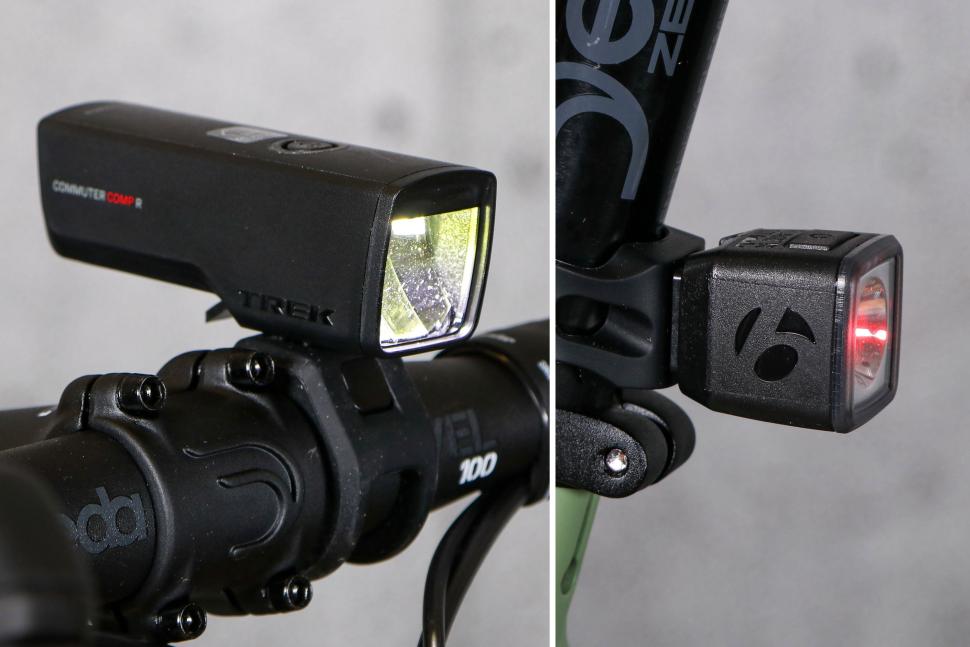 2023 Trek Commuter Comp R Flare R City Bike Light Set.jpg
2023 Trek Commuter Comp R Flare R City Bike Light Set.jpg£99.99
VERDICT:
Decent performance and well made lights, but they'll find it hard to compete for value against the competition
You can scroll through modes with passing through flash
Easy to fit and remove
Tough and well made
Rear auto brightness isn't bright enough
Long charge time on the Comp R
Cheaper alternatives are brighter for longer
Weight:
140g
Contact:
At road.cc every product is thoroughly tested for as long as it takes to get a proper insight into how well it works. Our reviewers are experienced cyclists that we trust to be objective. While we strive to ensure that opinions expressed are backed up by facts, reviews are by their nature an informed opinion, not a definitive verdict. We don't intentionally try to break anything (except locks) but we do try to look for weak points in any design. The overall score is not just an average of the other scores: it reflects both a product's function and value – with value determined by how a product compares with items of similar spec, quality, and price.
What the road.cc scores meanGood scores are more common than bad, because fortunately good products are more common than bad.
- Exceptional
- Excellent
- Very Good
- Good
- Quite good
- Average
- Not so good
- Poor
- Bad
- Appalling
The Trek Commuter Comp R Flare R City Bike Light Set chucks out a decent amount of illumination for urban riding or situations when you don't need more than the front light's 450-lumen output. It's well made, stands up to the elements and is quick and easy to fit to your bike – but there are better choices out there for the money.
With winter nearly here, now's the time to check out our best bike lights buyer's guide, which covers all sorts of options at a wide range of prices.
Comp R
So, the Comp R is a 450-lumen front light with a beam pattern incorporating a flat upper section similar to Germany's StVZO-compliant lights, a pattern Trek calls 'Kindbeam'. Basically, it works like a vehicle's dipped headlight, where the top of the beam is cut off to avoid dazzling oncoming road users.
With a modest 450-lumen output there is little chance of that anyway, but it's the thought that counts. The Comp R's beam profile also means you can't mount the light under the handlebar if real estate is tight.
As you can see from the beam comparison above, you do get a decent amount of illumination right in front of your bike, which is made up of a warm-white, near-yellow hue that becomes a much cooler white in front of that.
It's a combination that works well. The warmer colour feels softer feel on your eyes and there's a little less glare especially on wet surfaces, while the whiter area helps you pick up potholes, grit and other potential hazards in the distance.
The comparatively low output – 450 lumens is quite modest these days – is noticeable with how little punch there is illuminating the road further on. If some of your riding is on unlit country lanes you will be able to see where you're going, but you'll need to keep your speed in check and take it steady on descents.
That said, Trek does market this as a city light, so I won't criticise the Comp R too much on this, but it is worth taking into account if you need the extra versatility.
The Comp R has just a single top button and is pleasingly straightforward to use. You double click it to turn it on and press once to scroll through the three modes, of which two are static output: 450 lumens on high, 200 on low. You also have the option of a 300-lumen Day Flash mode, which will help you be seen in daylight or among the clutter of a busy urban environment.
Once you've scrolled though all three modes you find yourself back at the High one, and this is where I'd normally rant about the fact that you have to scroll through the flashing mode to get back to that high power mode, which I find infuriating when riding on a dark road.
Trek has thought about that, and has incorporated a Flash Bypass mode. When the light's on you press and hold the button for eight seconds; when the light flashes for another eight seconds you can now navigate between the high and low modes with just a click of the button.
Considering the unit's compact size the battery life is pretty good: two hours on high, nine on low, with flash giving you 22 hours.
Battery life is displayed via the power button: green for 100% to 26%; red for 25% to 6%; below that the LED flashes red.
Personally, I'd have liked an amber light for between 50% and 25% to give you a bit more precision on how much juice you have left, as I don't feel that green showing for 75% of the battery life is that useful.
The Comp R's charge time is 8.5 hours from flat, which is quite lengthy. If you're using it this time of year riding in the dark in the morning and the evening, you'll ideally want to top it up during the day if you are using the more power-draining static modes.
Fitting the Comp R is simple thanks to the rubber band-style mount. This allows the light to move a little on the bar over rough surfaces, but it's not a major problem and it does let you remove the whole setup from the bar quickly. You can also slide the light off the mount if you want to leave the bracket in position.
Flare R
The companion Flare R is a small and compact rear light, which puts out a decent 35-lumen punch at full power. As with the front light it's controlled by a single button that allows you to scroll through the three flashing and two static modes.
Trek calls the two flashing modes 'Day' and 'Night – and both put out the same 35-lumen max. The Day mode has an alternating and eye-catching quick-flash pattern that will definitely get you noticed; the Night mode has the LED on at all times at a low output with an intermittent flash.
Burn times are eight hours for Day and 16 hours for Night.
The static modes are also called Day and Night. The brighter Day mode gives you three hours of battery life at 20 lumens and 20 hours at two lumens for Night.
The Flare R also features an Auto Brightness mode that alternates between the Day and Night modes depending on the ambient light level. The switch between Day and Night on the flash setting is quite useful, both are noticeable, and it can help you eke out battery life, but don't bother with it on the static setting.
In brighter conditions the 20-lumen output can be seen, but it's not exactly eye-catching and the Night mode has such a low output you will disappear into the clutter of ambient lighting. I'd recommend just leaving the light on its manual setting to make the most of it.
Although the rear light's burn times are quite short at least the charge time is just 90 minutes. You know when to top up the battery when the status LED comes on – red when there's 25% left; flashing red below 5%.
Both lights feel tough and well built, so they should survive being dropped or knocked, and while their IPX4 rating isn't as high as you'll find on many other lights, which are normally at least IPX5, they'll stand up to light rain and drizzle without issue. I'd still recommend fitting a rear mudguard of some sort to give the Flare R more protection.
Value
This lightset has an RRP of £99.99 and you can also buy them individually – the Comp R costs £69.99, the Flare R £34.99. While those prices are reasonable, they're not that special these days when you look at some of the opposition.
Most lights we test are supplied individually, so we'll go down that route as most of the lighting sets we review are 'be seen' lights rather than 'see by' lights like this one.
Starting with the front, Laurence recently reviewed the NiteRider Lumina Micro 900, which he was quite impressed with. It kicks out 900 lumens at its maximum, and in its 450-lumen setting you'll get a 4.5hr burn time, which is all the more impressive as it's a similar size to the Trek.
Ravemen's CR450 has a T-shaped anti-glare beam and puts out 450 lumens for a 1hr 40mins burn time, which is a little less than the Trek – but it costs just £44.99. You also get a wired control button to scroll through the modes without having to lift your hand from the bar, and it has a higher IPX6 rating.
For a fiver less than the Trek Comp R you could get the Ravemen CR800 with 800 lumens I reviewed. One of the few downsides is that you do have to scroll through flash mode.
As for rear options, Cateye offers a range of outputs from its Viz range. For example, the Viz 150 that I tested a while ago puts out a maximum (yep, you guessed it) 150 lumens for 15 hours in one of its flash modes. A 20-lumen static mode gives five hours – more than double that afforded by the Trek – and it's yours for a mere £29.99.
The Magicshine SeeMee 200 is a little more expensive at £38.99 but it does come with a built-in braking function, which is something you may or may not want. You'll get 4.5hrs at its 60-lumen maximum – the titular 200 lumens is reserved for the brake light function – and Shaun thought it was a winner.
These show that while the Trek lights are decent, and I don't have anything to criticise them for in terms of reliability, performance or ease of use, you can build a longer-lasting and more powerful pairing for less money. Put the Ravemen CR800 and Cateye Viz 150 together and you'll pay a fiver less and have brighter lights with better run times.
Conclusion
Taken in isolation the Trek lights have reasonable burn times, good beam patterns and decent brightness – and they're well made too. But they do struggle when it comes to value, as these days you can get brighter lights or lights with better running times without parting with so much cash.
Verdict
Decent performance and well made, but they'll find it hard to compete for value against the competition
road.cc test report
Make and model: Trek Commuter Comp R Flare R City Bike Light Set
Size tested: One Size
Tell us what the light set is for and who it's aimed at. What do the manufacturers say about it? How does that compare to your own feelings about it?
Trek says: "A commuter-focused light set designed to offer a better experience for you and your fellow riders. The Commuter Comp's Kindbeam keeps more light on the path ahead of you while avoiding oncoming riders' eyes, for a bright light that won't blind oncoming riders. Daytime running mode on both front and rear lights adds visibility during the day to make it a great see-and-be-seen light set option for any city or path rider."
The Kindbeam front light is a bonus for restricting dazzle, but other brands offers similar beams with higher output for less money.
Tell us some more about the technical aspects of the light set?
A see and be-seen light set for everything you need to ride with lights every ride, day or night
Commuter Comp R front Kindbeam keeps light on the ground ahead of you and out of oncoming riders' eyes
Flare R City delivers a wide, 35-lumen beam that's ideal for city use
DRL-specific focus, flash and range flash patterns offer ultimate daytime visibility
Commuter Comp modes: high 450 LM – 1.5 hrs, low 200 LM – 6 hrs, day flash 300 LM – 12 hrs
Flare R City modes: day flash 35 LM – 8 hrs, night flash 35 LM – 16 hrs, day steady 20 LM – 3 hrs, night steady 2 LM – 20 hrs
Blendr-compatible for integrated mounting on compatible Blendr stems, helmets and helmet mounts
USB-rechargeable with included micro USB cable
Rate the front light for quality of construction:
8/10
Rate the rear light for quality of construction:
8/10
Rate the light set for design and ease of use. How simple were the lights to use?
8/10
Rate the front light for the design and usability of the clamping system
8/10
Rate the rear light for the design and usability of the clamping system
8/10
Rate the front light for waterproofing. How did it stand up to the elements?
7/10
Rate the front light for waterproofing. How did it stand up to the elements?
7/10
Rate the front light for battery life. How long did it last? How long did it take to recharge?
6/10
Rate the rear light for battery life. How long did it last? How long did it take to recharge?
7/10
Rate the front light for performance:
7/10
Rate the rear light for performance:
5/10
Rate the front light for durability:
8/10
Rate the rear light for durability:
8/10
Rate the front light for weight:
7/10
Rate the rear light for weight:
7/10
Rate the light set for value:
3/10
Tell us how the lights performed overall when used for their designed purpose
They are decent performers in an urban environment, but you can buy cheaper lights with more versatility for riding on dark routes and expanding your riding limits.
Tell us what you particularly liked about the lights
Good build quality.
Tell us what you particularly disliked about the lights
Front - long recharge time.
Rear - auto brightness mode is pointless.
How does the price compare to that of similar products in the market, including ones recently tested on road.cc?
There's no doubt that Trek has delivered a well-constructed light set. But when you take everything into consideration – brightness, usability and beam patterns – this struggles in terms of overall value, with many others offering more for less.
Did you enjoy using the lights? Yes
Would you consider buying the lights? No – there are better options for less money.
Would you recommend the lights to a friend? No
Use this box to explain your overall score
Good quality lights and decent enough performance in terms of beam patterns and technology, but you can build a much brighter set of lights for less money without sacrificing build quality or beam pattern design.
About the tester
Age: 44
I usually ride: This month's test bike My best bike is: B'Twin Ultra CF draped in the latest bling test components
I've been riding for: Over 20 years I ride: Every day I would class myself as: Expert
I regularly do the following types of riding: time trialling, commuting, club rides, sportives, fixed/singlespeed,
Since writing his first bike review for road.cc back in early 2009 senior product reviewer Stu has tested more than a thousand pieces of kit, and hundreds of bikes.
With an HND in mechanical engineering and previous roles as a CNC programmer/machinist, draughtsman and development engineer (working in new product design) Stu understands what it takes to bring a product to market. A mix of that knowledge combined with his love of road and gravel cycling puts him in the ideal position to put the latest kit through its paces.
He first made the switch to road cycling in 1999, primarily for fitness, but it didn’t take long for his competitive side to take over which led to around ten years as a time triallist and some pretty decent results. These days though riding is more about escapism, keeping the weight off and just enjoying the fact that he gets to ride the latest technology as part of his day job.
Latest Comments
- bmxboyx01 40 min 48 sec ago
It has to be an organised group. My mate had his Canyon gravel bike with every single upgrade going on it. So many go each year, but the sleepy...
- chrisonabike 1 hour 31 min ago
Think this line of argument * is almost a default and not just for collisions involving cyclists. e.g. "They ran into me ergo it's their fault"....
- Rapha Nadal 1 hour 56 min ago
I think I'm just going to go down half a size which should fix it.
- Rendel Harris 2 hours 32 min ago
No mention of the cost...at $1449 I think I'll stick to the old "I feel a bit thirsty, better have a drink" system.
- ChrisA 2 hours 41 min ago
One bike seized? I'm sure there were four of them. ‐‐---- Quote "E-bike riders caught using police drone" Did the steal the drone, as well?
- ChrisA 2 hours 52 min ago
Mirror advised.
- BikingBud 4 hours 3 min ago
Yup - Rivermind! ****SPOILER ALERT***** https://www.radiotimes.com/tv/sci-fi/black-mirror-common-people-ending-e...
- lesterama 5 hours 5 min ago
A friend told me that Gravaa doesn't work with inserts. Visma actually glued their tubeless tyres on to avoid tyre detachments! Sounds like a...
- Velophaart_95 5 hours 24 min ago
That was my first thought when I saw, and read it........











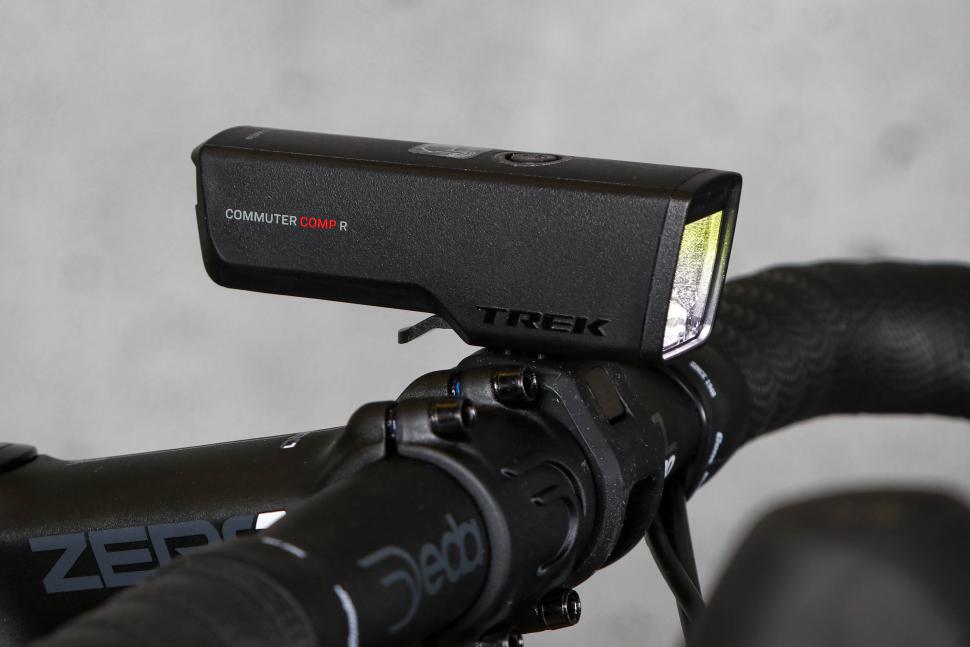

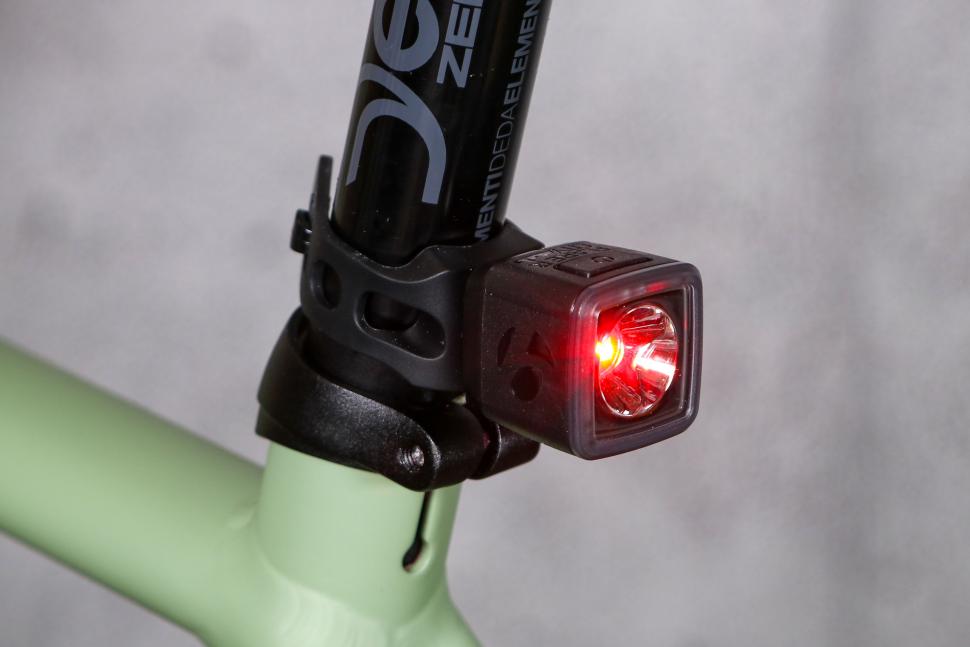
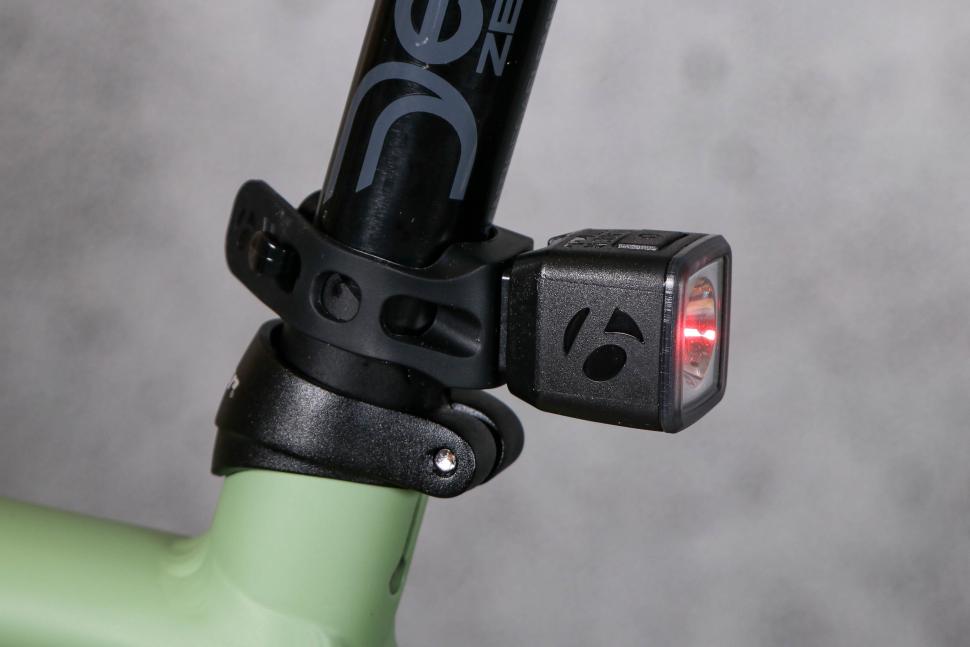

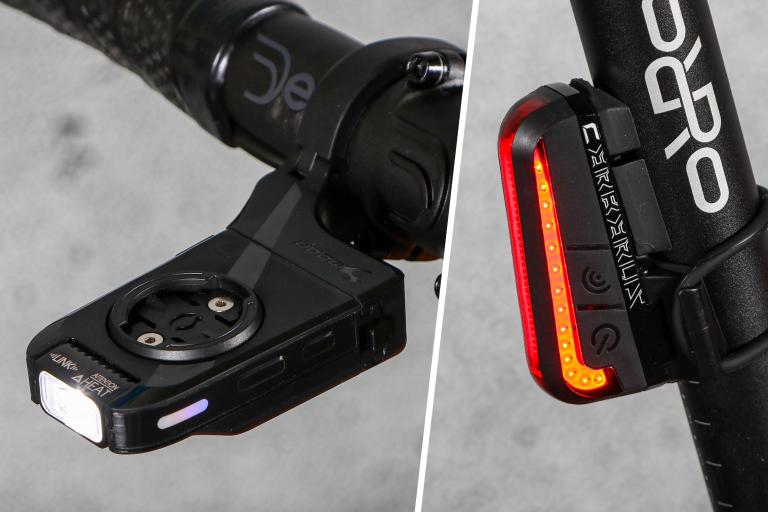

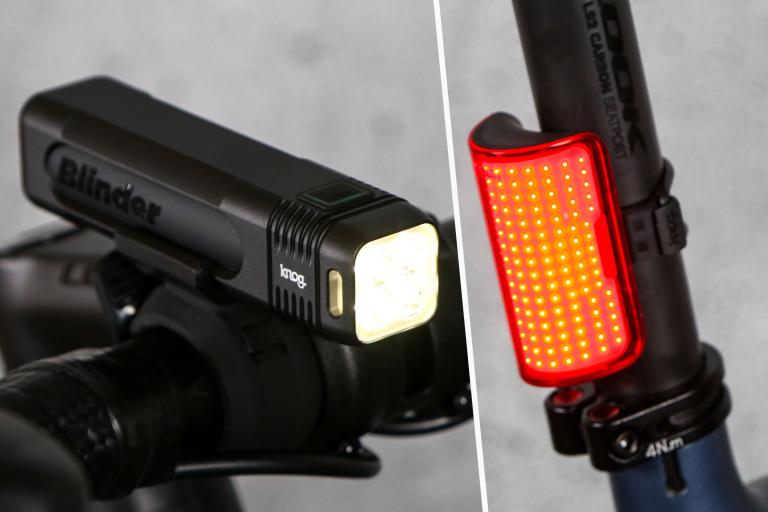

Add new comment
1 comments
I'm tempted by these only because of the nifty magnetic mounting system onto the Bontrager helmet I recently purchased. But I currently have a pretty comprehensive light collection.